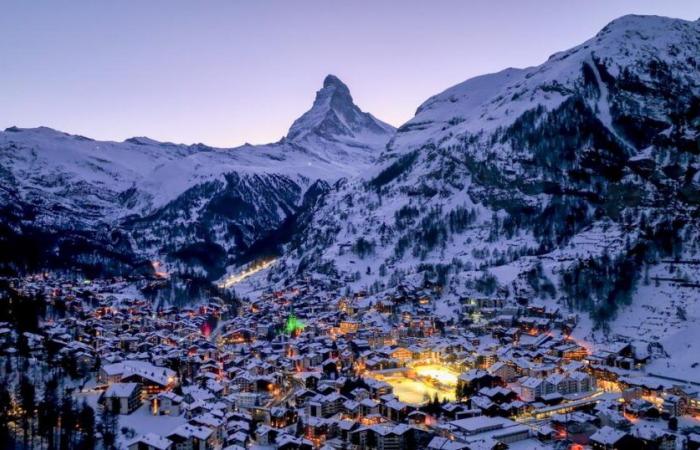The attendance was particularly exceptional during the holiday season.
The snowfall up to low altitude from the first frosts encouraged ski enthusiasts to hit the Swiss tracks, allowing the country’s ski lifts to seal their best winter season in the decade. During the 2024/2025 winter season, the number of visitors increased by 11% compared to the previous year, according to a first estimate of the association of Swiss ski lifts published Tuesday.
These are “The best season of the decade”said this organization which represents 350 mechanical lift operators across the Alpine country, thanks in particular to frequentation “Exceptional” During the holiday season, she said in a statement. Compared to the 2023/2024 winter season, the number of visitors increased by 24% during the holiday season, 10% during the February and 1% holidays at the end of the season, according to the first estimates.
Read too
Hiking skiing in Switzerland, lens 4000 meters!
An estimate
The association did not disclose the exact number of visitors during this winter season – which runs from November to April -, since it is an estimate on the basis of the first passages in a sample of 120 stations. She will publish more detailed figures in August. In early January, she had already reported a very good start to the season thanks to the snowfall until the plain in mid-November, then new falls shortly before Christmas which had boosted the last-minute reservations.
The rest of the season was drier, but the “High quality track base”with this abundant snow at the start of the season, and the nights “Relatively cold”made it possible to maintain “Very good track conditions” With technical snow, she said. “This season has been very good for many small and low -altitude ski areas”underlined Berno Stoffel, the director of the Swiss ski lifts, quoted in the press release.
The previous year, winter had been much more difficult for small operators, which concentrated in low altitude, after an episode of Redoux in mid-season which had affected the snowpack. In November, the association launched with other Swiss tourism organizations a project called “Snow compass” which aims to assess the evolution of snowfall in the future to find solutions in particular for low -altitude stations, very vulnerable to climate change.








